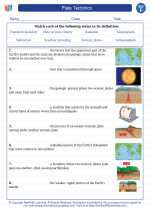Tectonic Movements
Tectonic movements refer to the large-scale movements of the Earth's lithosphere. These movements are responsible for the formation of mountains, earthquakes, and volcanic activity. There are three main types of tectonic movements: divergent boundaries, convergent boundaries, and transform boundaries.
Divergent Boundaries
Divergent boundaries occur where two tectonic plates are moving away from each other. This movement creates a gap which is often filled with molten rock from the mantle, leading to the formation of new crust. Divergent boundaries are commonly found along mid-ocean ridges, where new oceanic crust is formed.
Convergent Boundaries
Convergent boundaries occur where two tectonic plates are moving towards each other. When two plates collide, one plate is forced beneath the other in a process known as subduction. This can lead to the formation of deep ocean trenches, volcanic activity, and the creation of mountain ranges.
Transform Boundaries
Transform boundaries occur where two tectonic plates slide past each other horizontally. This movement can cause earthquakes as the plates become locked together and then suddenly slip past one another.
Study Guide for Tectonic Movements
- What are tectonic movements?
- What are the three main types of tectonic movements?
- Describe divergent boundaries and where they are commonly found.
- Explain the process of subduction at convergent boundaries.
- What geological features can be formed at convergent boundaries?
- How do transform boundaries cause earthquakes?
◂Science Worksheets and Study Guides Sixth Grade. Plate Tectonics

 Worksheet/Answer key
Worksheet/Answer key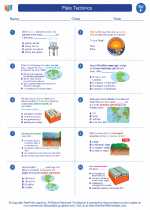
 Worksheet/Answer key
Worksheet/Answer key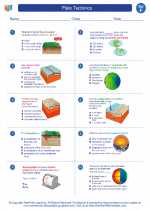
 Vocabulary/Answer key
Vocabulary/Answer key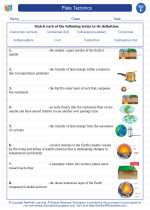
 Vocabulary/Answer key
Vocabulary/Answer key
 Vocabulary/Answer key
Vocabulary/Answer key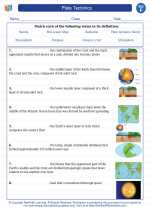
 Vocabulary/Answer key
Vocabulary/Answer key